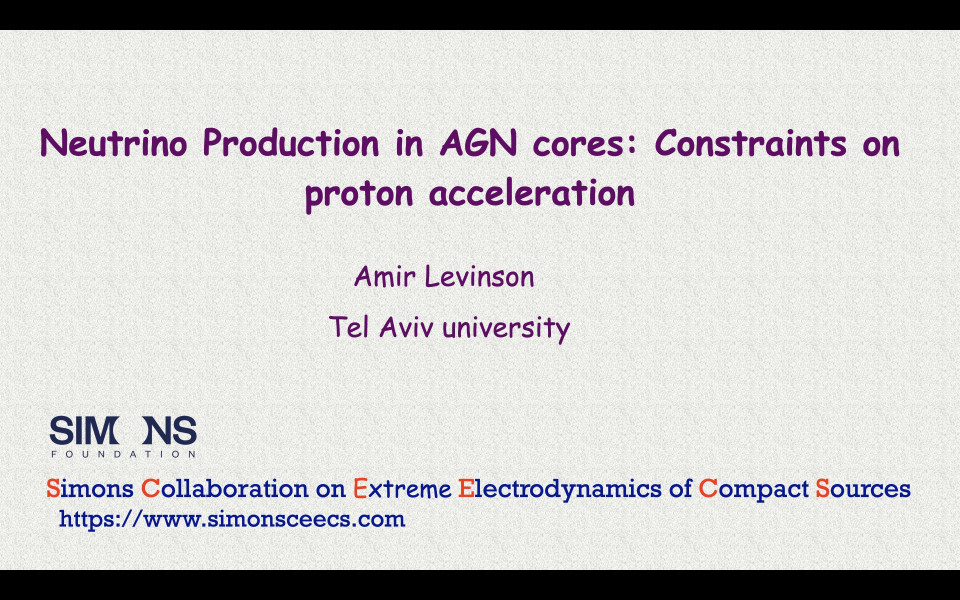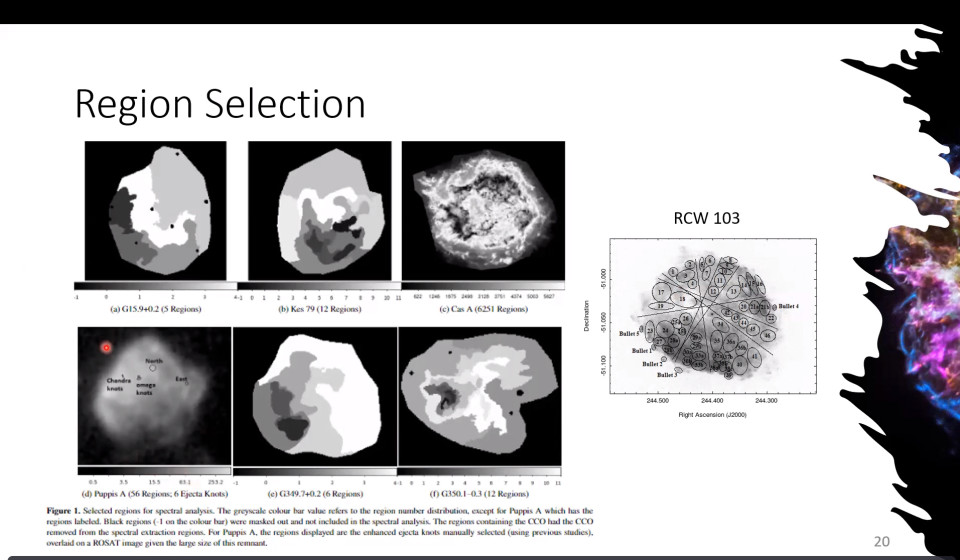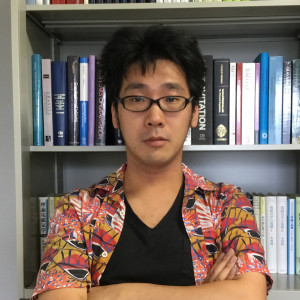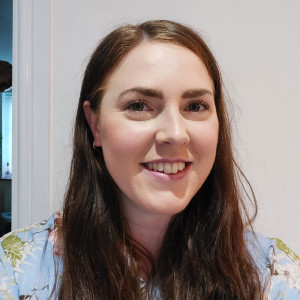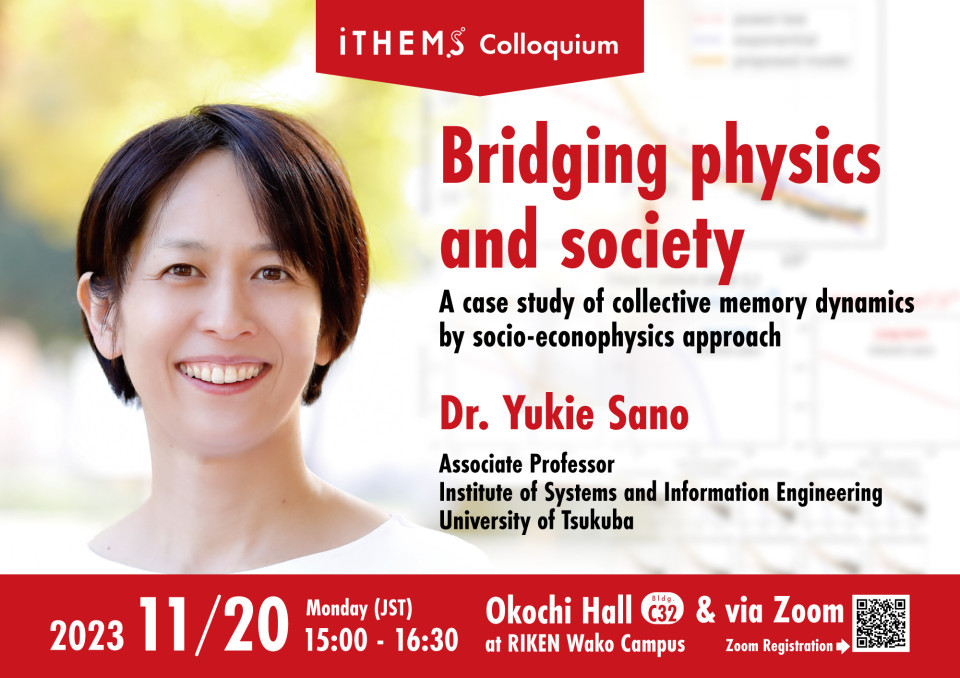Volume 272
Back to Newsletter List
Seminar Report
ABBL-iTHEMS Joint Astro Seminar by Amir Levinson on October 6, 2023
2023-10-12
Amir initiated his seminar by presenting a detailed review of multi-messenger astronomy, with a particular focus on neutrinos and their relationship with Active Galactic Nuclei (AGNs). AGNs are extraordinary astrophysical systems in which accreting black holes, situated at the centers of galaxies, generate emissions so luminous that they outshine their host galaxies. In the latter part of his presentation, Amir delved into the mechanisms responsible for neutrino production within the core of AGNs, including insights from his own research. His work has been motivated by the IceCube collaboration's recent claim of detecting high-energy neutrinos originating from the direction of NGC 1068. He highlighted the considerable challenges in theoretically reproducing the neutrino spectrum suggested in the IceCube’s observational data. A significant challenge arises when considering the energy distribution of protons accelerated in the highly magnetized core regions of Active Galactic Nuclei (AGNs). Recent particle-in-cell (PIC) simulations have found energy distributions that are too 'hard' to successfully replicate the anticipated neutrino spectrum. He discussed one way to circumvent this problem is to consider a population of pre-accelerated protons being injected into turbulent regions before they undergo acceleration processes governed by turbulence. He suggested that one way to circumvent this problem is to consider a population of pre-accelerated protons that are injected into turbulent regions before undergoing acceleration processes governed by turbulence. This idea was supported by his PIC simulations, and he further discussed how this mechanism may be realized within the core regions of AGNs.
Reported by Hirotaka Ito
Neutrino production in AGN cores: Constraints from Kinetic Plasma Simulations
October 6 (Fri) 14:00 - 15:15, 2023
Seminar Report
ABBL-iTHEMS Joint Astro Seminar by Chelsea Braun on October 6, 2023
2023-10-06
Presented was a systematic, global study of Galactic supernova remnants (SNRs) hosting Central Compact Objects (CCOs) aimed at addressing their explosion properties and supernova progenitors. With the Chandra and XMM-Newton telescopes, a spatially resolved X-ray spectroscopy study is performed on seven SNRs that show evidence of shock-heated ejecta. Using an algorithm, we segmented each SNR in the sample into regions of similar surface brightness. These regions were fit with one- or two-component plasma shock model(s) in order to separate the forward-shocked interstellar medium from the reverse shock-heated ejecta which peak in the X-ray bands for elements including O, Ne, Mg, Si, S, Ar, Ca, and Fe. Dr. Braun and her collaborators subsequently derived the explosion properties for each SNR in the sample and found overall low explosion energies (<10^51 erg). To address their progenitor mass, they compared the measured abundances from our spectroscopic modelling to five of the most widely used explosion models and a relatively new electron-capture supernova model. Additionally, they explored degeneracy in the explosion energy and its effects on the progenitor mass estimates. However, no explosion models match all of the measured ejecta abundances for any of the SNRs in our sample. Therefore, she presented our best progenitor mass estimates and find overall low progenitor masses (<=25 solar masses) and we highlight the discrepancies between the observed data and the theoretical explosion models.
Reported by Shigehiro Nagataki
Progenitors and Explosion Properties of Supernova Remnants Hosting Central Compact Objects
October 6 (Fri) 10:00 - 11:30, 2023
Upcoming Events
Seminar
iTHEMS Biology Seminar
Population genetics in microchannels
October 17 (Tue) 16:00 - 17:00, 2023
Anzhelika Koldaeva (Postdoctoral Researcher, Biological Complexity Unit, Okinawa Institute of Science and Technology Graduate University (OIST))
Spatial constraints, such as rigid barriers, affect the dynamics of cell populations, potentially altering the course of natural evolution. In this paper, we investigate the population genetics of Escherichia coli proliferating in microchannels with open ends. Our analysis is based on a population model, in which reproducing cells shift entire lanes of cells toward the open ends of the channel. The model predicts that diversity is lost very rapidly within lanes but at a much slower pace among lanes. As a consequence, two mixed, neutral E. coli strains competing in a microchannel must organize into an ordered regular stripe pattern in the course of a few generations. These predictions are in quantitative agreement with our experiments. We also demonstrate that random mutations appearing in the middle of the channel are much more likely to reach fixation than those occurring elsewhere. Our results illustrate fundamental mechanisms of microbial evolution in spatially confined space.
Reference
- A. Koldaeva, H.-F. Tsai, A. Q. Shen, and S. Pigolotti, Population genetics in microchannels, Proc. Natl. Acad. Sci. U.S.A. 119, e2120821119 (2022), doi: 10.1073/pnas.2120821119
Venue: via Zoom
Event Official Language: English
Workshop
Introduction to F-Theory
October 18 (Wed) - 20 (Fri) 2023
Shun'ya Mizoguchi (Associate Professor, High Energy Accelerator Research Organization (KEK))
This is the fifth event hosted by the Quantum Gravity Gatherings (QGG) Study Group at RIKEN iTHEMS. For this event, we have invited Professor Shun'ya Mizoguchi from KEK, Tsukuba, to deliver pedagogical lectures on the F-theory and its relation to particle physics. We aim for this event to provide insights to researchers in related fields.
Originally, heterotic string theory was a promising candidate for describing our world, as it naturally incorporated Grand Unified Theory (GUT) based on an exceptional gauge group. However, heterotic theory encounters challenges in moduli fixing. On the other hand, type II theory has an advantage in moduli fixing, but realizing GUT proves to be challenging. The F-theory describes the strongly coupled type IIB string theory, fully utilizing string dualities. This theory appears to realize both the moduli fixing and GUT. Consequently, F-theory plays a central role in string phenomenology. Shun'ya is a leading expert in these areas. We are fortunate to have the opportunity to learn numerous insights into string theory as well as particle physics.
This intensive lecture series is designed to be an interactive event. To facilitate this, the number of participants will be limited to approximately 30. The intensive talk will be given in a face-to-face blackboard style (in English, no online streaming) to encourage informal and lively Q&A discussions. The program will also include short talk sessions, where participants can present a 5-minute talk on a topic of their choice, including their research, reviews of specific works, or future study interests.
Venue: #435-437, 4F, Main Research Building, RIKEN Wako Campus
Event Official Language: English
Seminar
Toward inferring the equation of state from gravitational-wave astronomy
October 18 (Wed) 14:30 - 16:00, 2023
Koutarou Kyutoku (Associate Professor, Graduate School of Science, Kyoto University)
The property of supranuclear-density matter is an important question to be answered in QCD. One promising avenue is to study neutron stars with astronomical observations. For this purpose, gravitational waves have become an important tool after GW170817 that delivered information about the matter at a few times the saturation density. If future detectors improve the sensitivity at high frequency, we may be able to investigate the phase structure at further higher density via observations of postmerger gravitational waves or the absence thereof. In this talk, I will review the current understanding of the neutron-star equation of state and then discuss possible future directions based on our binary merger simulation.
This seminar is a part of UKAKUREN seminar and jointly held by GW-EOS WG in iTHEMS.
Venue: via Zoom / Seminar Room #359, 3F Main Research Building, RIKEN
Event Official Language: English
Seminar
iTHEMS Math Seminar
A cluster algebra structure in the quantum cohomology ring of a quiver variety
October 24 (Tue) 10:00 - 11:30, 2023
Yingchun Zhang (Postdoctoral Researcher, Institute for Advanced Study in Mathematics, Zhejiang University, China)
The Gromov-Witten theory of a quiver variety is expected to be preserved by quiver mutation according to Seiberg duality, which has been proved to be true for A-type and star-shaped quivers. Cluster algebra can be constructed for a given quiver via quiver mutation. The two subjects Gromov-Witten and cluster algebra seem to differ a lot. Howerver, when we move to the quantum cohomology ring of a quiver variety, Benini-Park-Zhao’s work “indicates” that there should be a cluster algebra structure in the quantum cohomology ring of the quiver variety. In this talk, I will introduce our recent work about the construction of such a cluster algebra structure in the quantum cohomology of a quiver variety. In particular, we will give a proof of the construction for A-type cluster algebra in quantum cohomology of a flag variety.
This is a joint work with Weiqiang He.
Venue: Seminar Room #359, 3F Main Research Building, RIKEN
Event Official Language: English
Seminar
iTHEMS Theoretical Physics Seminar
Topological Aspect of Adsorption Site Selectivity on Metal Surfaces
October 24 (Tue) 13:30 - 15:00, 2023
Yuta Tsuji (Associate Professor, Faculty of Engineering Sciences, Kyushu University)
In this talk, the presenter will discuss which adsorption structure is preferred in the adsorption of atoms and molecules on metal surfaces based on the topology of the adsorption structures. The method of moments is used to analyze the electronic density of states of the surface. The third-order moment, which characterizes the skewness of the distribution of the electronic density of states, is related to the topology of the triangles at the adsorption interface. By further relating this to the change in energy of the system with the change in electron occupancy of the states, it is shown that it is possible to discuss the relationship between the type of metal and the topological features of the energetically stable adsorption structure.
Venue: Seminar Room #359, 3F Main Research Building, RIKEN / via Zoom
Event Official Language: English
Seminar
iTHEMS Biology Seminar
Mathematical modelling of the host response to inhalational anthrax across different scales
October 31 (Tue) 16:00 - 17:00, 2023
Bevelynn Williams (Postdoctoral Fellow, School of Mathematics, University of Leeds, UK)
Inhalational anthrax, caused by the bacterium Bacillus anthracis, is a disease with very high fatality rates. Due to the significant risk posed if the bacterium was to be intentionally used as a bioweapon, it is important to be able to defend against such an attack and to make optimal decisions about treatment strategies. Mechanistic mathematical models can help to quantify and improve understanding of the underlying mechanisms of the infection. In this talk, I will present a multi-scale mathematical model for the infection dynamics of inhalational anthrax. This approach involves constructing individual models for the intracellular, within-host, and population-level infection dynamics, to define key quantities characterising infection at each level, which can be used to link dynamics across scales. I will begin by introducing a model for the intracellular infection dynamics of B. anthracis, which describes the interaction between B. anthracis spores and host cells. The model can be used to predict the distribution of outcomes from this host-pathogen interaction. For example, it can be used to estimate the number of bacteria released upon rupture of an infected phagocyte, as well as the timing of phagocyte rupture and bacterial release. Next, I will show how these key outputs can be used to connect the intracellular model to a model of the infection at the within-host scale. The within-host model aims to provide an overall understanding of the early progression of the infection, and is parametrised with infection data from studies of rabbits and guinea pigs. Furthermore, this model allows the probability of infection and the time to infection to be calculated. Building a model that offers a realistic mechanistic description of these different animal responses to the inhalation of B. anthracis spores is an important step towards eventually extrapolating the model to describe the dynamics of human infection. This would enable predictions of how many individuals would become infected in different exposure scenarios and also on what timescale this would occur.
Venue: via Zoom / Hybrid Format (3F #359 and Zoom), Main Research Building, RIKEN Wako Campus
Event Official Language: English
Seminar
iTHEMS Theoretical Physics Seminar
Compact Star Solutions Beyond General Relativity
November 7 (Tue) 13:30 - 15:00, 2023
Kota Numajiri (Ph.D. Student, Graduate School of Science, Nagoya University)
The neutron star solutions have been gathering attention. Their high compactness enables us to observationally access the information about extreme regimes of hadron physics. On the other hand, their strong gravity features bring up another possibility, gravity beyond general relativity (GR).
Although GR has been a great success until now, the present scenario for our universe still has several problems, such as dark sectors and the quantum description of gravity. To tackle these problems, the modified gravity theories have been discussed for decades. Their modifications are expected to become noticeable in strong gravity regimes like compact stars.
In this talk, I will discuss the configuration of the compact star solution under the F(R) gravity, one of the most popular and simplest modifications of GR. The background hydrostatic solutions are calculated with some F(R) models, which show non-trivial influences from the additional scalar DOF in this theory. The tidal deformation phenomenon is also considered to focus on another observable, tidal deformability. I will comment on how to utilize obtained observables to determine the gravity theory and the unknown equation of state simultaneously.
Venue: Seminar Room #359, 3F Main Research Building, RIKEN / via Zoom
Event Official Language: English
Seminar
Math-Phys Seminar
Vortex Reconnection in Classical and Quantum Fluids
November 10 (Fri) 15:00 - 16:30, 2023
Yoshifumi Kimura (Professor, Graduate School of Mathematics, Nagoya University)
As a fundamental process in turbulence, vortex reconnection has been studied widely not only in classical fluids but also in quantum fluids. For the latter, the first real observation of vortex reconnection was rather recent, and since then active analyses have been continued. On the other hand, vortex reconnection in the former has a long history, and it is now studied intensively as a candidate for a solution to the problem of the regularity/Singularity of the Navier-Stokes equations, which is one of the seven millennium prize problems of the Clay Mathematical Institute.
In this talk, after introducing the problem, we will present some results of analysis and simulations of the dynamical system which has been proposed to describe a vortex reconnection of two vortex rings located symmetrically on two tilted planes [1], [2], [3]. Then it will be shown that this dynamical system can be written in noncanonical Hamiltonian form with Hamiltonian, H, and a Casimir invariant, C in the limit of zero viscosity [4].
References
- H.K. Moffatt and Y. Kimura, Towards a finite-time singularity of the Navier-Stokes equations. Part 1. Derivation and analysis of dynamical system, J. Fluid Mech. 861, 930 (2019), doi: 10.1017/jfm.2018.882
- H.K. Moffatt and Y. Kimura, Towards a finite-time singularity of the Navier-Stokes equations. Part 2. Vortex reconnection and singularity evasion, J. Fluid Mech. 870, R1 (2019), doi: 10.1017/jfm.2019.263
- H.K. Moffatt and Y. Kimura, Towards a finite-time singularity of the Navier-Stokes equations. Part 3. Vortex reconnection and singularity evasion, J. Fluid Mech. 967, R1 (2023), doi: 10.1017/jfm.2023.472
- P.J. Morrison and Y. Kimura, A Hamiltonian Description of Finite-Time Singularity in Euler’s Fluid Equation, Phys. Lett. A 484, 129078 (2023), doi: 10.1016/j.physleta.2023.129078
Venue: Seminar Room #359, 3F Main Research Building, RIKEN / via Zoom
Event Official Language: English
Workshop
iTHEMS Graph-theory workshop: from basics to applications
November 13 (Mon) - 14 (Tue) 2023
Momoko Hayamizu (Assistant Professor, Faculty of Science and Engineering, School of Fundamental Science and Engineering, Waseda University / PRESTO Researcher, Japan Science and Technology Agency (JST))
Seiya Negami (Professor Emeritus, Yokohama National University)
Takashi Okada (Program-Specific Associate Professor, Institute for Life And Medical Sciences, Kyoto University)
Tasuku Soma (Associate Professor, Department of Statistical Inference and Mathematics, The Institute of Statistical Mathematics / Associate Professor, Statistical Science Program, The Graduate University for Advanced Studies (SOKENDAI))
Shun'ichi Azuma (Professor, Garduate School of Informatics, Kyoto University)
We will hold a two-day workshop on graph theory, which covers a variety of topics including basic concepts and theorems in graph-theory; graph-embedding; phylogenetic tree construction; chemical reaction networks; and cactus network theory.
The details are found in the website linked below.
Venue: #435-437, Main Research Building, RIKEN Wako Campus
Event Official Language: English
Colloquium
iTHEMS Colloquium
Bridging physics and society: A case study of collective memory dynamics by socio-econophysics approach
November 20 (Mon) 15:00 - 16:30, 2023
Yukie Sano (Associate Professor, Institute of Systems and Information Engineering, University of Tsukuba)
The movements of individuals with free will are unpredictable, complex, and, needless to say, fundamentally distinct from the movements of matter. Furthermore, studying society, which forms collectives while engaging in intricate individual interactions, using mathematical models seems incredibly daunting. However, when analyzing empirical data, relatively simple mathematics often emerge in the distribution and dynamics of society at the level of collective behavior. Additionally, such mathematics often share commonalities with physical phenomena. With this background, research is progressing by applying ideas from physics to social-economic phenomena, a field known as socio-econophysics. In this presentation, I will introduce a mathematical model that addresses the decay of collective memory using access logs on the web as an example of research in socio-econophysics.
Venue: Okochi Hall, 1F Laser Science Laboratory, RIKEN / via Zoom
Event Official Language: English
Seminar
ABBL-iTHEMS Joint Astro Seminar
Early Formation of Dark Matter Halos
November 24 (Fri) 14:00 - 15:15, 2023
Derek Beattie Inman (Research Scientist, RIKEN Interdisciplinary Theoretical and Mathematical Sciences Program (iTHEMS))
Cosmological observations have led to an extremely precise understanding of the large-scale structure of the Universe. A common assumption is to extrapolate large-scale properties to smaller scales; however, whether this is correct or not is unknown and many well-motivated early Universe scenarios predict substantially different structure formation histories. In this seminar I will discuss two scenarios where nonlinear structures form much earlier than is typically assumed. In the first case, the initial fluctuations are enhanced on small scales leading to either primordial black holes clusters or WIMP minihalos right after matter-radiation equality. In the second, I will show that an additional attractive dark force leads to structure formation even in the radiation dominated Universe. I will furthermore discuss possible observations of such early structure formation including changes to the cosmic microwave background, dark matter annihilation, and when the first galaxies form.
Venue: Seminar Room #359, 3F Main Research Building, RIKEN / via Zoom
Event Official Language: English
Workshop
Second Workshop on Fundamentals in Density Functional Theory (DFT2024)
February 20 (Tue) - 22 (Thu) 2024
The density functional theory (DFT) is one of the powerful methods to solve quantum many-body problems, which, in principle, gives the exact energy and density of the ground state. The accuracy of DFT is, in practice, determined by the accuracy of an energy density functional (EDF) since the exact EDF is still unknown. Currently, DFT has been used in many communities, including nuclear physics, quantum chemistry, and condensed matter physics, while the fundamental study of DFT, such as the first principle derivations of an accurate EDF and methods to calculate many observables from obtained densities and excited states. However, there has been little opportunity to have interdisciplinary communication.
On December 2022, we had the first workshop on this series (DFT2022) at Yukawa Institute for Theoretical Physics, Kyoto University, and several interdisiplinary discussions and collaborationd were started. To share such progresses and extend collaborations, we organize the second workshop. In this workshop, the current status and issues of each discipline will be shared towards solving these problems by meeting together among researchers in mathematics, nuclear physics, quantum chemistry, and condensed matter physics.
This workshop mainly comprises lectures/seminars on cutting-edge topics and discussion, while a half-day session composed of contributed talks is also planned.
This workshop is partially supported by iTHEMS-phys Study Group. This workshop is a part of the RIKEN Symposium Series.
The detailed information can be found in the workshop website.
Venue: 8F, Integrated Innovation Building (IIB), Kobe Campus, RIKEN / via Zoom
Event Official Language: English
Paper of the Week
Week 3, October 2023
2023-10-12
Title: Foliated BF theories and Multipole symmetries
Author: Hiromi Ebisu, Masazumi Honda, Taiichi Nakanishi
arXiv: http://arxiv.org/abs/2310.06701v1
If you would like to cancel your subscription or change your email address,
please let us know via our contact form.
Copyright © iTHEMS, RIKEN. All rights reserved.


